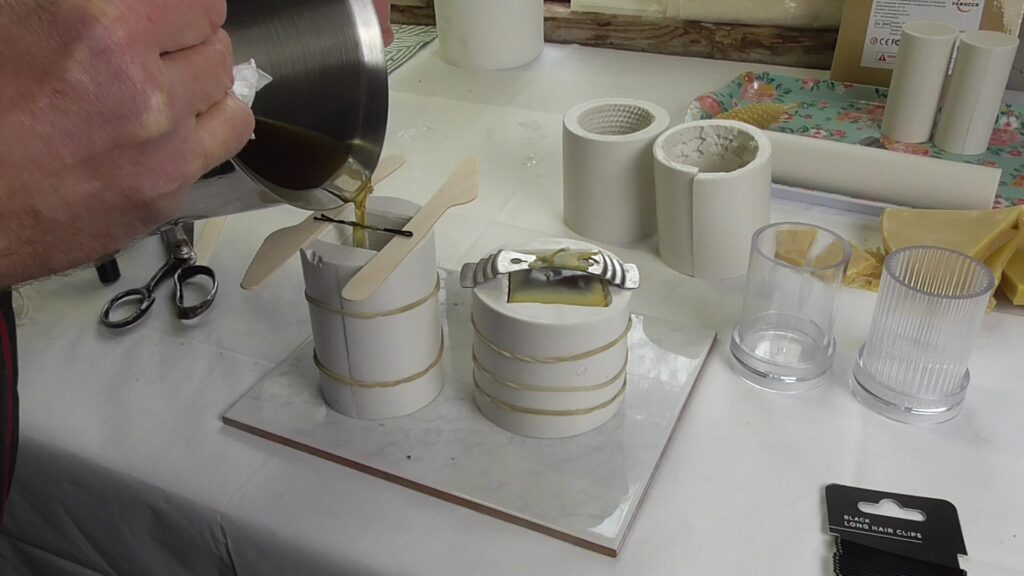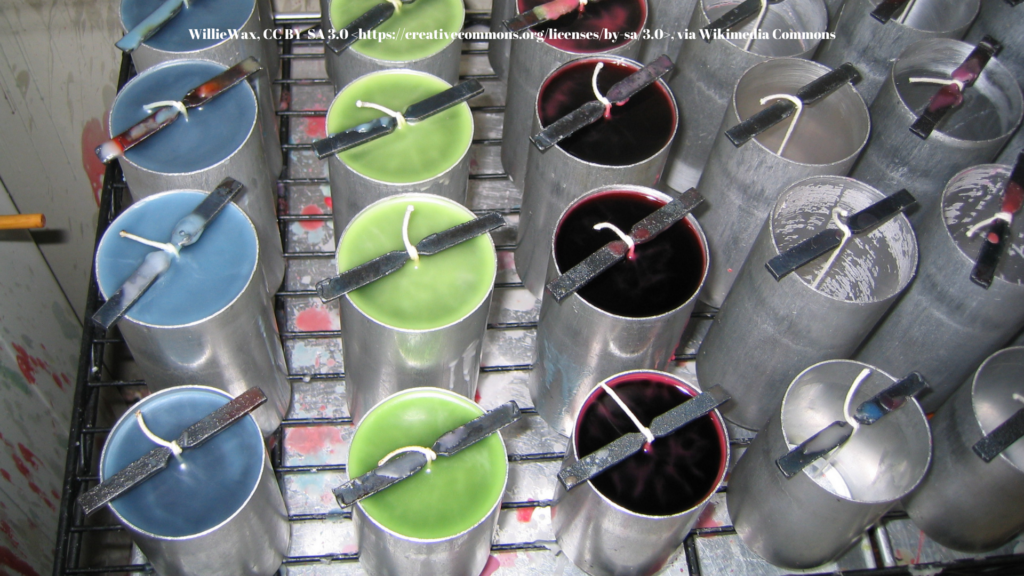Candle Moulds for Beeswax Candles
There are a number of ways to make beeswax candles. We have rolled candles, container candles, moulded candles and dipped beeswax candles. In this article I want to focus in on moulded beeswax candles and to examine the various types of candle moulds.
Rubber Type Moulds
These are the first type of mould that you will come across when making beeswax candles. These moulds are commonly sold by bee equipment suppliers. Rubber type moulds are ideal for making candles as you can have intricate designs and the moulds pull away from the candles relatively easily.
There are three main types of rubber moulds:
Polyurethane moulds
As the name suggests these moulds are made of Polyurethane. Polyurethanes are a family of plastics, or more specifically, elastomeric polymers, that includes rubber, which, since first invented in 1937, have been adapted to produce a broad spectrum of products. Polyeurethane moulds appear to be more commonly available from bee equipment suppliers in North America such as Mann Lake. These moulds are more rigid and require the use of a mould release agent such as a silicone spray to help release the finished candle. That is because the polyurethane material is more adhesive to wax.
Silicone moulds

Silicone is something of a hybrid between a synthetic rubber and a synthetic plastic polymer. Silicone moulds are softer than polyurethane moulds and offer easier candle removal because silicone possesses a non-stick and flexible surface. As a result, you don’t have to use a releasing agent to remove the candle from the silicone mold. A downside is that these types of candle molds are slightly more expensive. Silicone moulds are available from suppliers such as Lyson from Poland and are a popular choice of candle mould.
Latex moulds

A third type of rubber mould is the latex mould. Latex is made from natural rubber. One can use these moulds to make intricate designs and complex shapes like fruit flowers and animals. The cool thing about latex moulds is that they are highly flexible and can peel away from your finished candle. The latex mould will come with a self-sealing wick hole. Also, one will not use a releasing agent when removing it from the mold. This candle mould is a popular choice due to its versatility. I have purchased some of these moulds from Amazon.com including the one pictured above (this mould makes a cactus candle).
Metal Moulds

Pre-manufactured metal moulds are available from some beekeeping and candle making suppliers. If using metal moulds it is a good idea to spray the inside with mould release spray to make it easier to release the cool candle from the mould. An alternative to mould release spray is soapy water or diluted honey. Any coating that is used will have to be wiped off the finished candle with a damp cloth without wetting the wick. Metal moulds are the most durable and are recommended for larger pillar candles or large taper candles.
Plastic Moulds

Plastic moulds are also a good choice – especially for small candles as they are cheaper than silicone but still very durable. There are different types of plastics available from different suppliers. Check the specifications from the individual suppliers. For example Thornes (UK) advertise clear, flexible plastic moulds. Polycarbonate plastic moulds are designed for paraffin wax but can be used for beeswax as well. It is advisable to use a mould release agent when using these moulds. If a candle does get stuck in a mould just pop the mould in the freezer for half an hour and the wax will shrink away from the mould.
Glass moulds
moulds are made from laboratory grade heatproof glass. The downside with glass molds is that they are highly delicate. They can break if you fail to take care of them properly. They are also prone to cracking and scratching. Have a look at the glass moulds on the EH Thorne website.
Other type moulds

Essentially any round tube of the right internal diameter can be used: galvanized steel, aluminum, polyvinyl chloride (PVC), even bamboo. You can also use other shapes as well. An old milk carton can be used as a mould and cut away from the candle when the wax becomes solid. I have trained beekeepers in Africa to make candles using PVC pipes as moulds. The PVC is coated with diluted honey as a candle releasing agent to prevent the candles sticking to the mould when cool (you can also use silicone lubricant spray or soapy water as a releasing agent).
Conclusion
When using candle moulds you can make a huge variety of sizes and shapes of beeswax candles. For beginners, rubber type moulds such as silicone moulds are probably the easiest to start off with. However rubber moulds can be relatively expensive. You can always improvise you own moulds using plastic pipes etc if you don’t have the funds to buy candle moulds.
If you would like to learn more about beeswax candles and making candles using different methods, my new course How to make and sell beeswax candles is launching on June 16th 2022. Please check out the promo video here. If you have any comments or questions please post them below.
Many thanks,
Tom